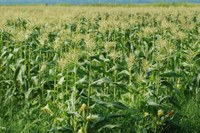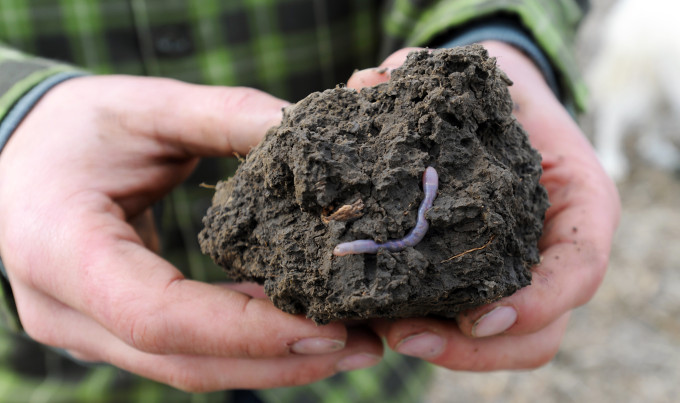Featured News
New Guidelines Reflect Benefits of No-till Farming
North Dakota university made history as the first in the U.S. to make no-till soil fertility recommendations for corn. As North Dakota's land grant university, NDSU's corn guideline has reaching implications for 3.85 million acres of corn planted in the state.
 The 11-page guide stated that fields dedicated to continuously to no-till for six years or longer, need 40-50 pounds less nitrogen per acre than conventionally tilled fields. The
The 11-page guide stated that fields dedicated to continuously to no-till for six years or longer, need 40-50 pounds less nitrogen per acre than conventionally tilled fields. The
guide is based on adjusted corn fertility recommendations that take into account the lower fertilizer-inputs associated with zero tillage and conservation agriculture. The recommendations are based on no-till data dating back to the 1970s and over 50 test sites comparing fertility requirements for no-till and conventional tillage fields. NDSU faculty and extension agents explained this difference as the result of the associated increase in biological activity in no-till soil boosting stored nitrogen in soil.
"With this much microbial activity in your soil and this much organic carbon... this is the potential of your soil to supply X amount of nitrogen."
The recommendations are an endorsement of a growing conservation agriculture movement in North Dakota. However while the release of these guidelines have generated excitement, it is unsure whether other land grant universities will follow NDSU's example. Funding that prioritizes research on the benefits of no-till and conservation agriculture practices is limited, and NDSU faculty cited it as the biggest impediment to changing the fertility standards in North Dakota.
Arnason, Robert. August 28 2014. New guidelines reflect benefits of no-till farming. The Western Producer. http://www.producer.com/2014/08/new-guidelines-reflect-benefits-of-no-till-farming/.
More Crops Per Drop: No-Till Farming Combats Drought
This article uses Paul and Elizabeth Kaiser of Northern California as prime examples of the factors that push farmers toward no-till farming, and the financial and environmental benefit this change can bring.
"I wanted greater productivity and healthier soils with less reliance on machinery." No-till soil management also increased the farm's soil organic matter from 2.3 percent to over 6 percent ( ata 12-inch depth). This improvement was qualified with the staggering fact that,
 "With every 1 percent increase in SOM, an acre of topsoil can hold an additional 16,000 gallons of plant-available water."
"With every 1 percent increase in SOM, an acre of topsoil can hold an additional 16,000 gallons of plant-available water."
Especially in view of the current drought in California, which is estimated to cost the agriculture industry as much as $2.2 billion in losses, the increased SOM and lower soil moisture evaporation attributes of no-till could be enough to convert more farmers to no-till. While the water-saving benefits of no-till could popularize the practice, the lag-time before farmers see these benefits could inhibit adoption of no-till. The increased herbicide usage associated with no-till could reduce its environmental and economic advantages. However some experts argue that, if no-till is practiced correctly, weed control is not an issue.
It comes down to whether or not the farmer is willing to try a new method of farming. And currently it looks like enough farmers are ready to put down the plow. No-till farming is increasing at a rate of 1.5 percent per year, and currently makes up around 10 percent of overall farm land in the U.S.
Maki, Olivia. August 26 2014. More crops per drop: No-till farming combats drought. Civil Eats. http://civileats.com/2014/08/26/more-crops-per-drop-no-till-farming-combats-drought/.





